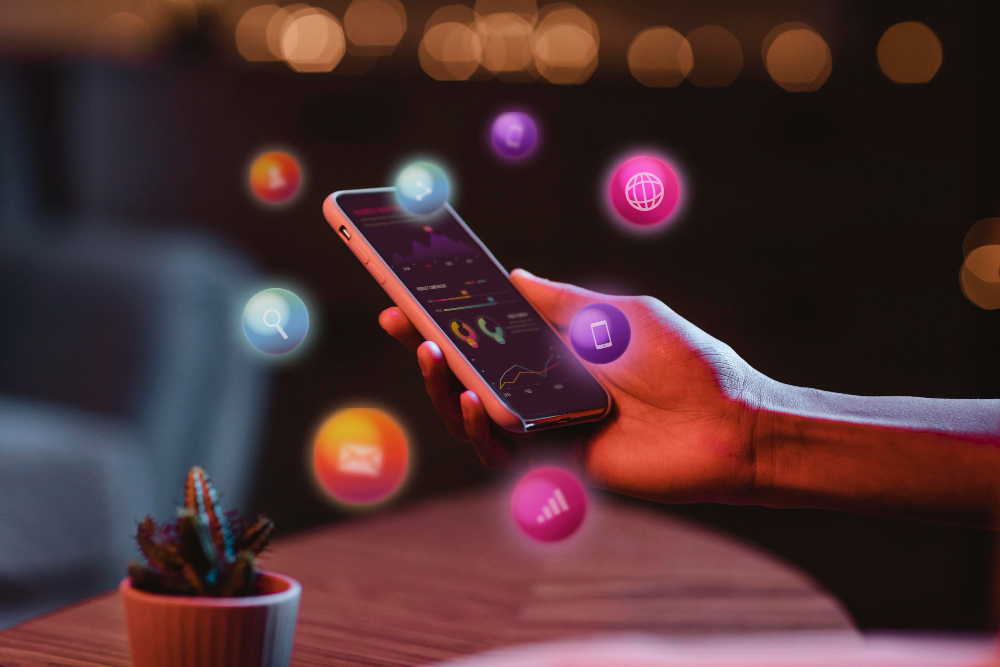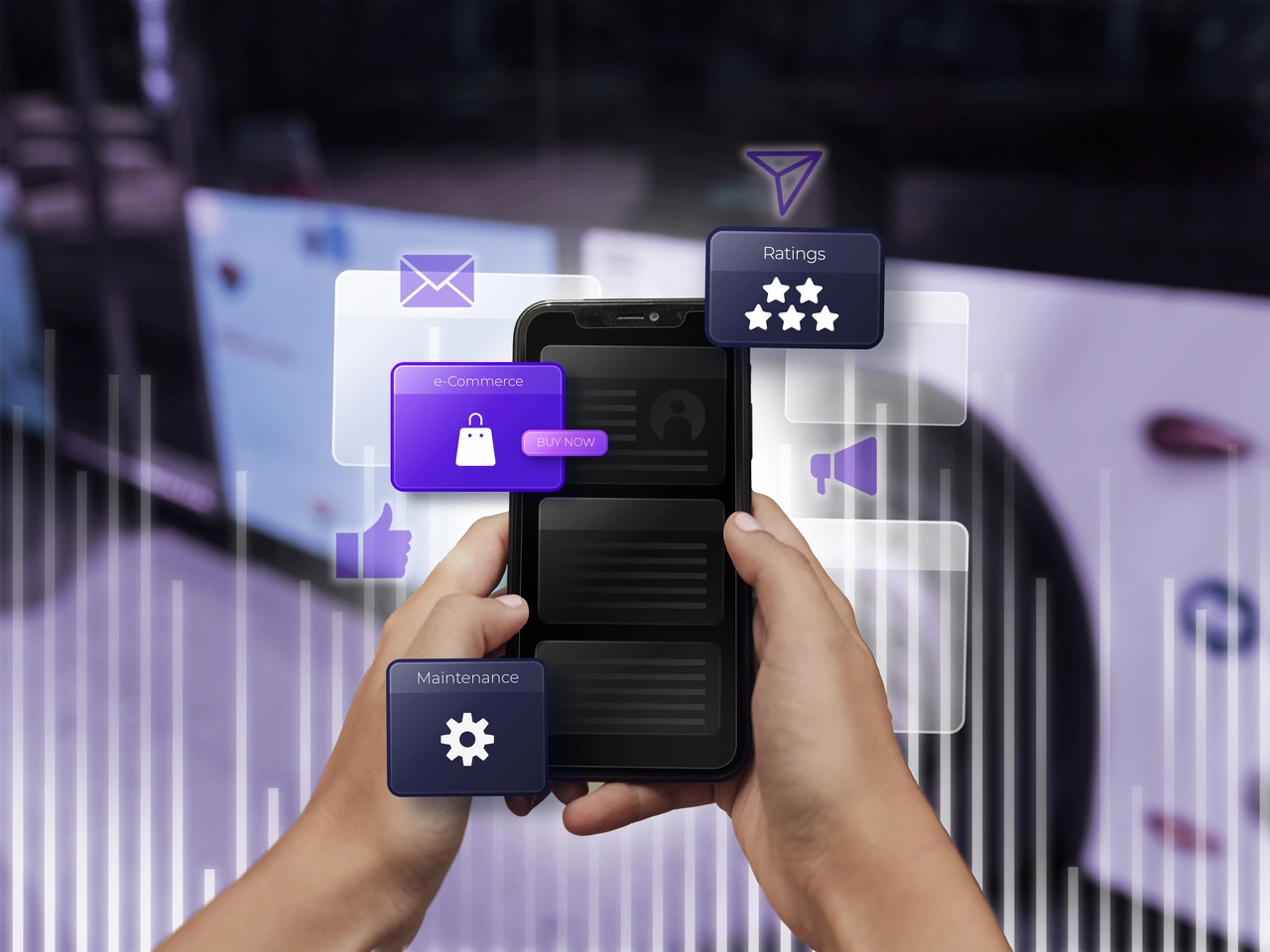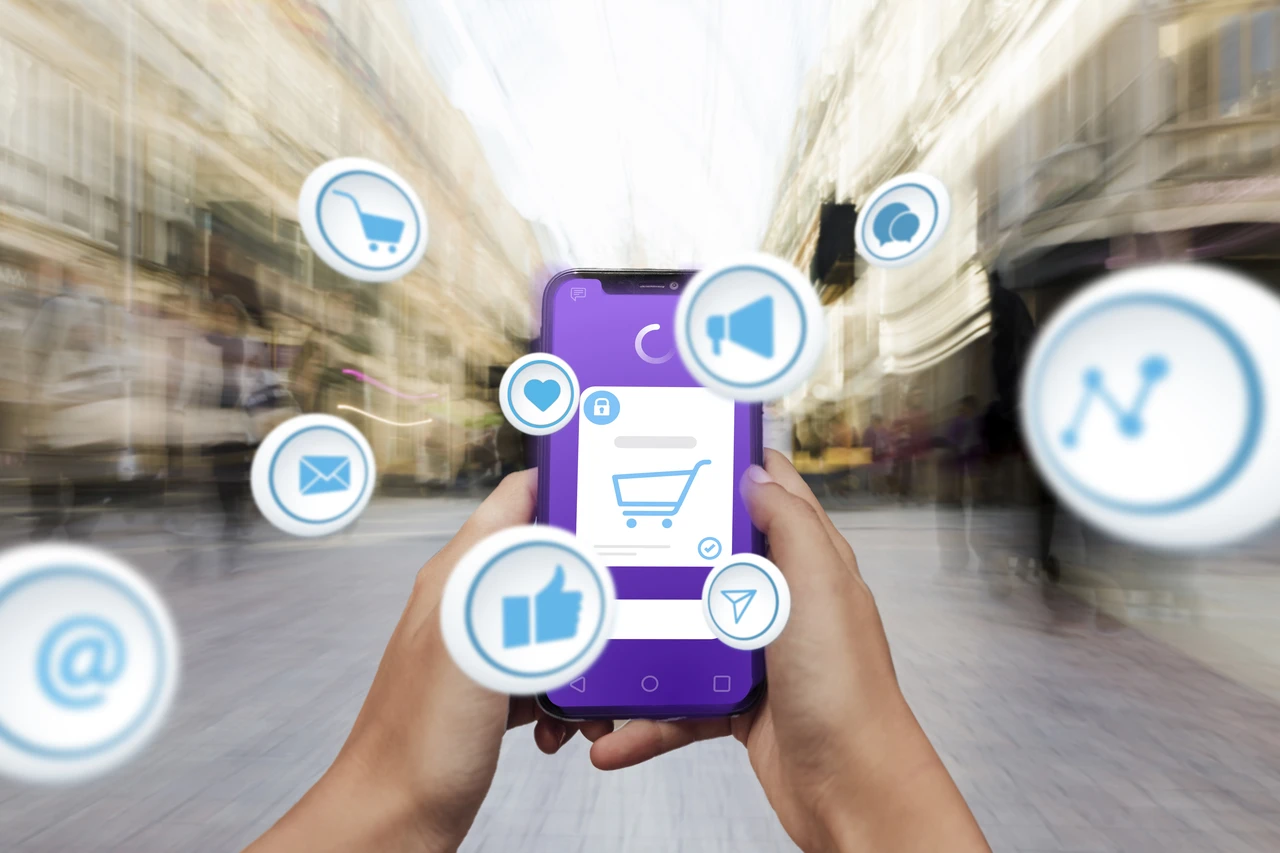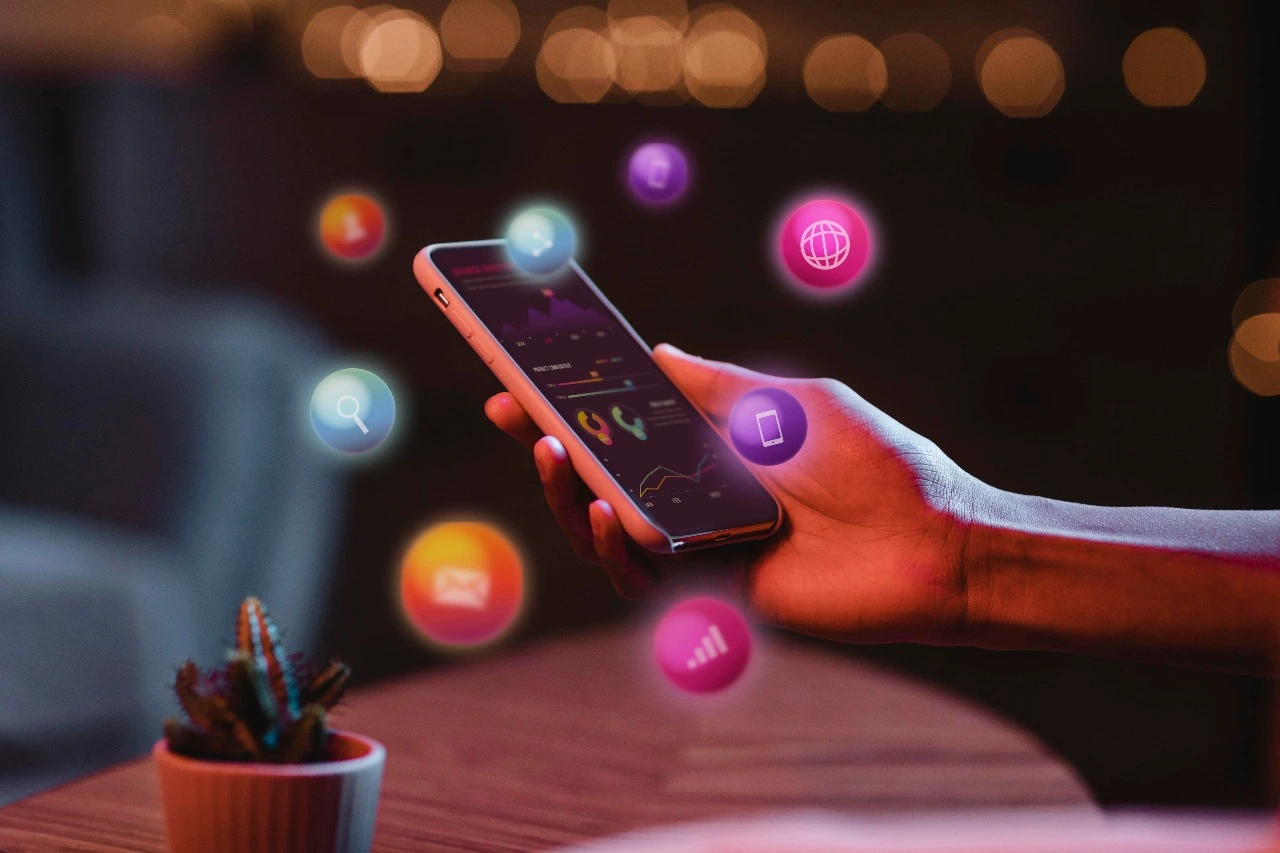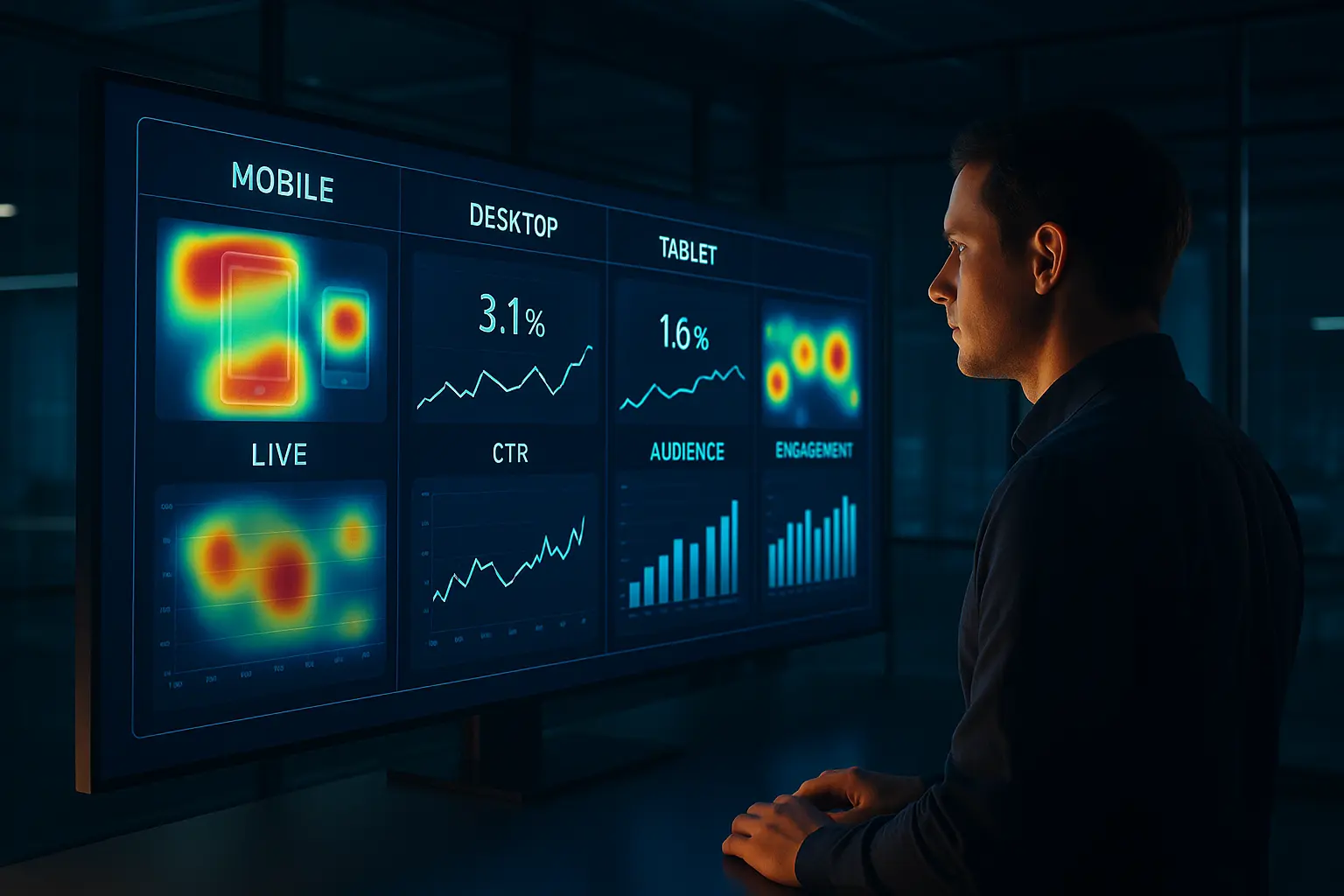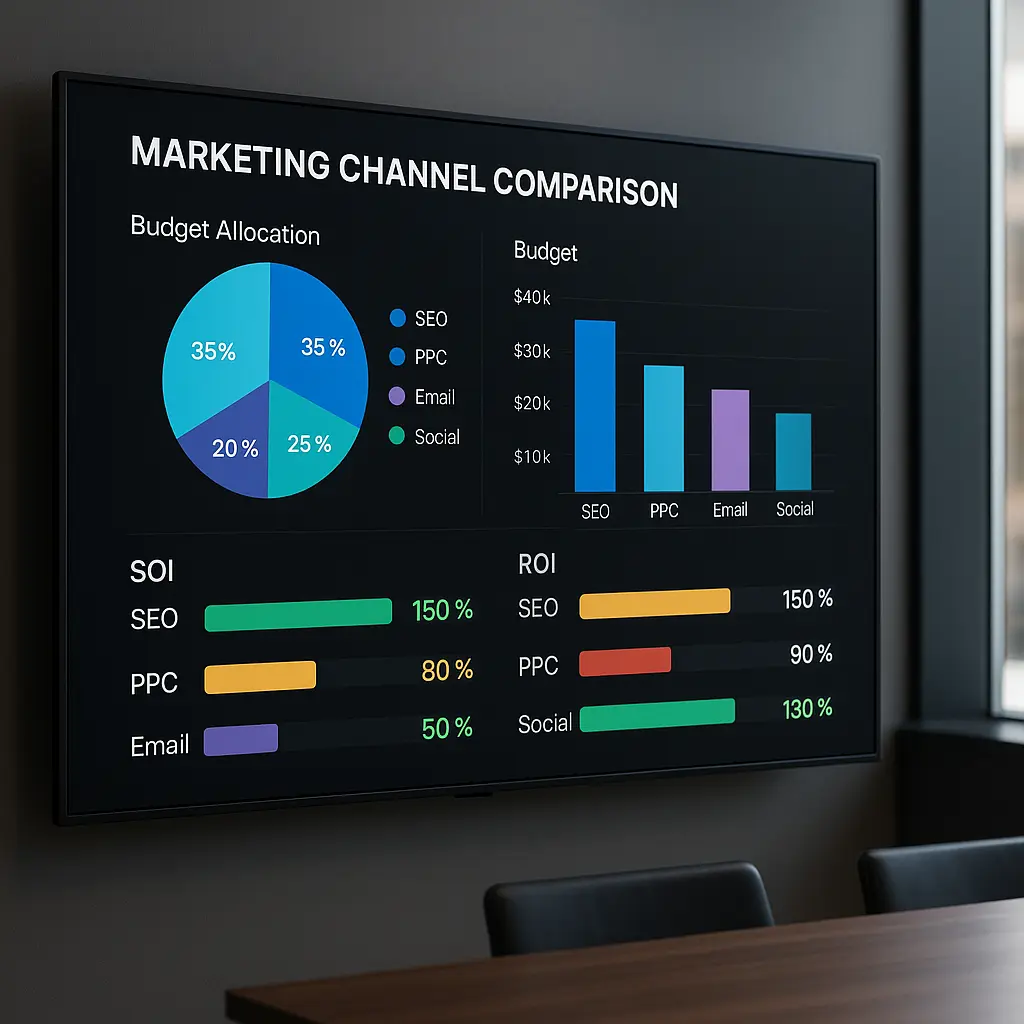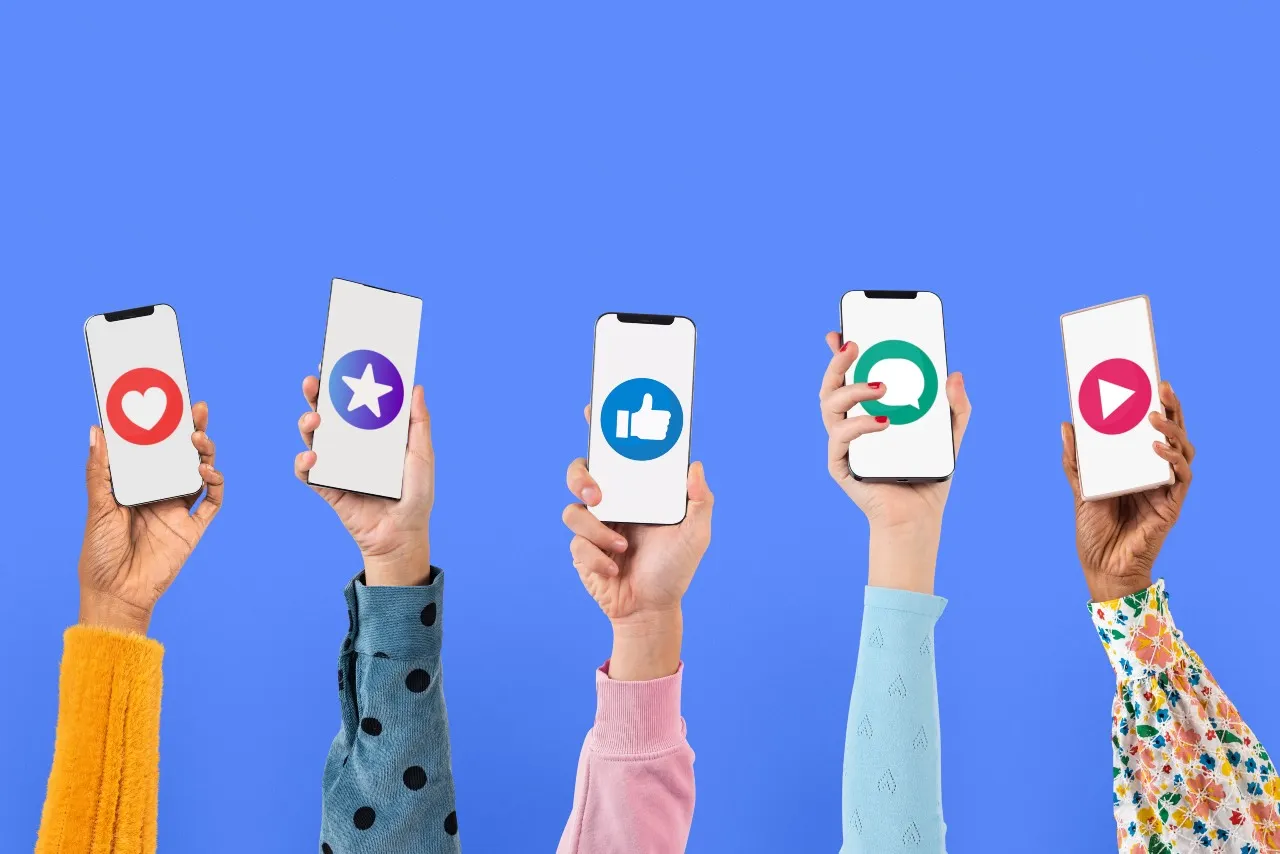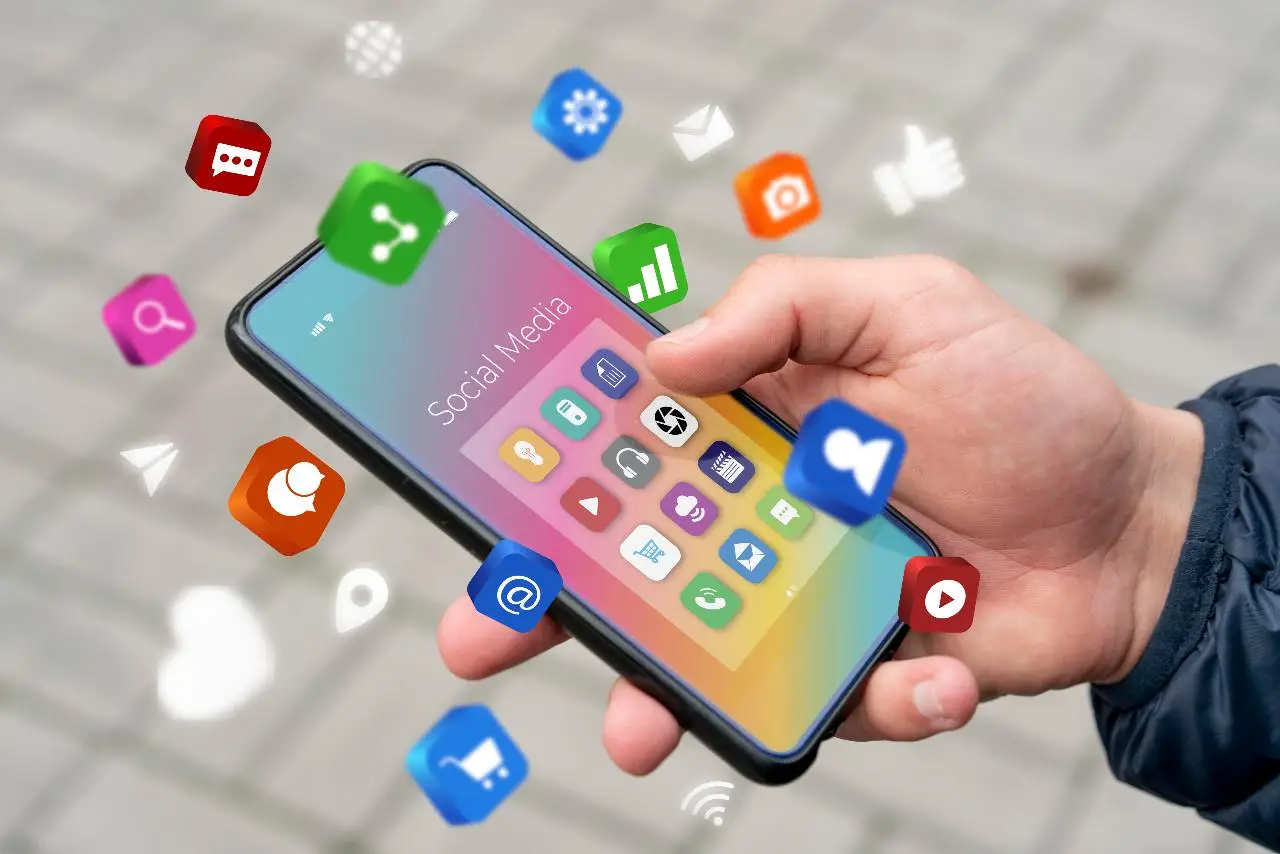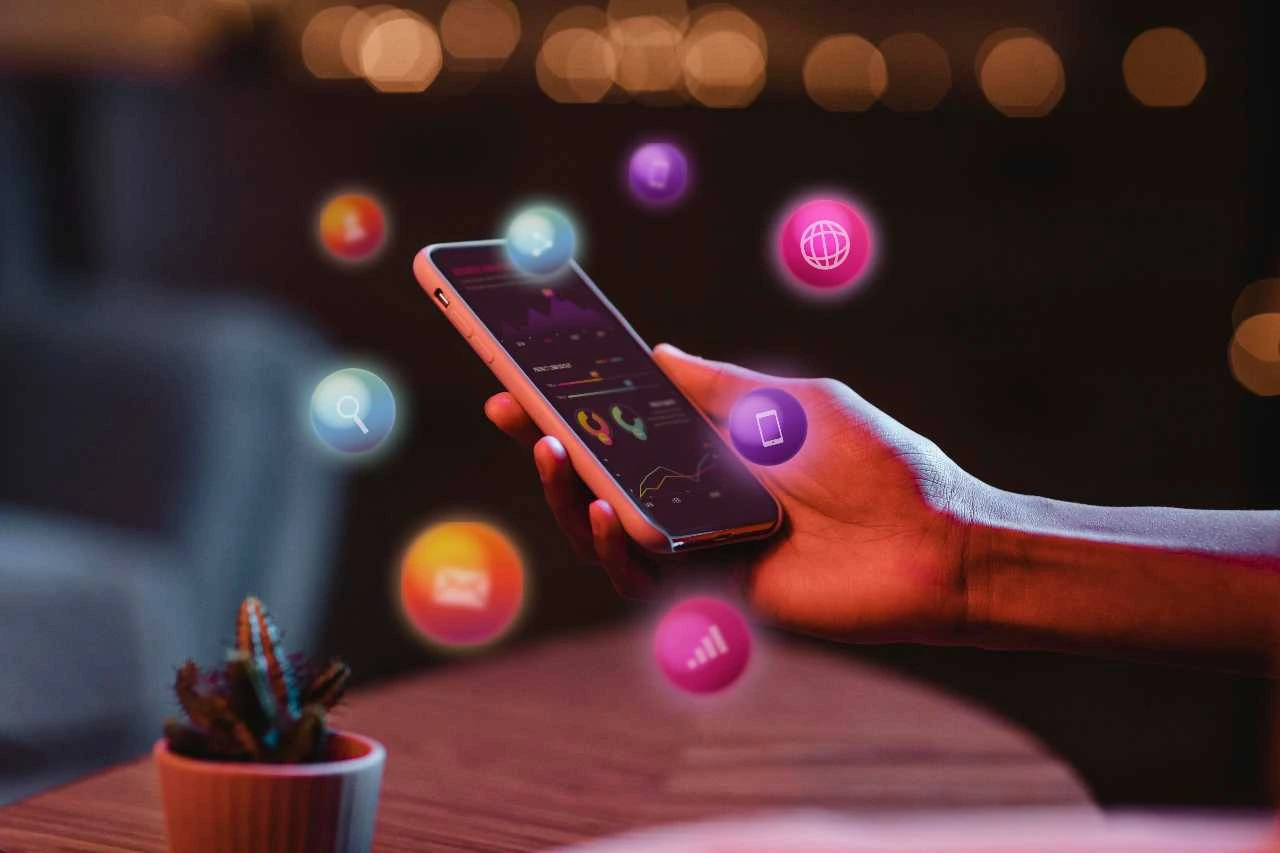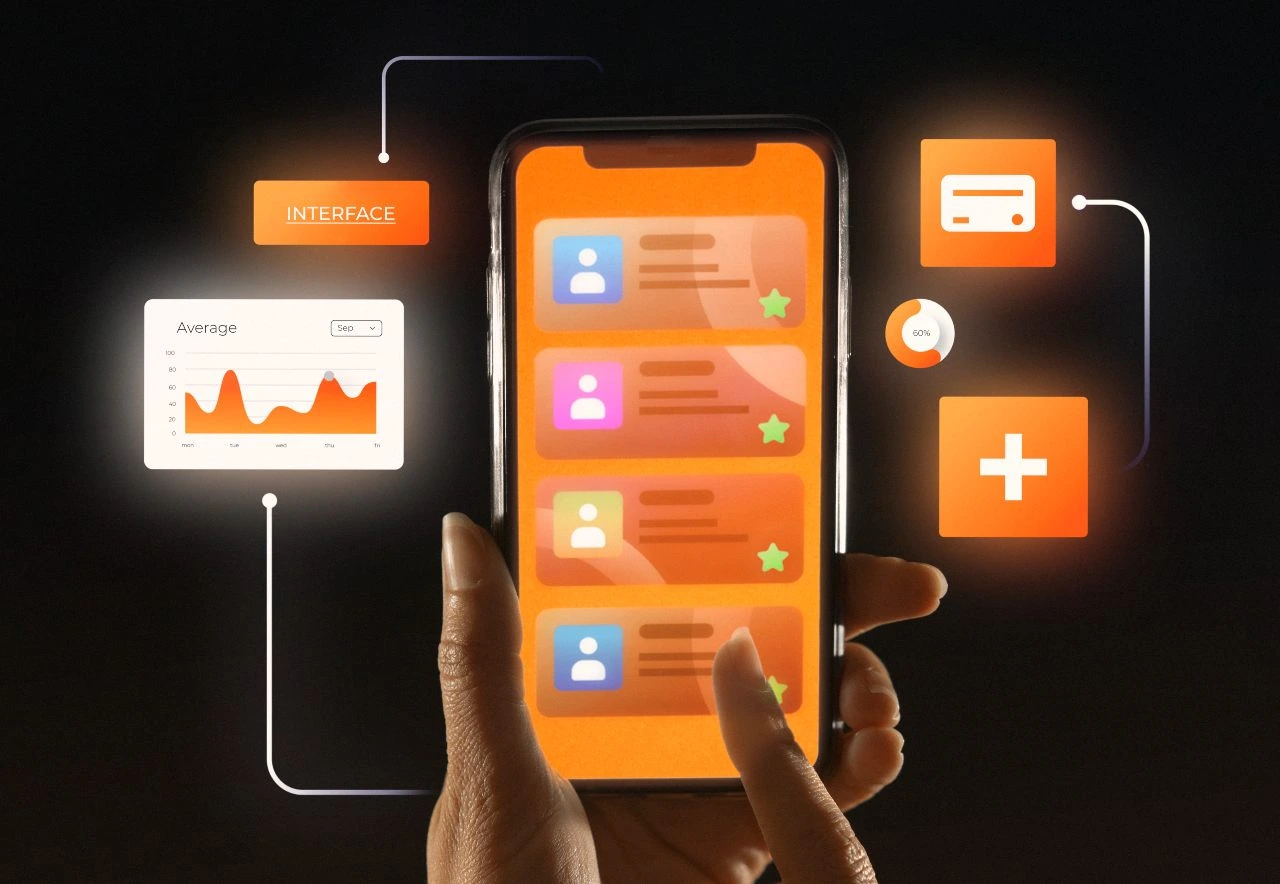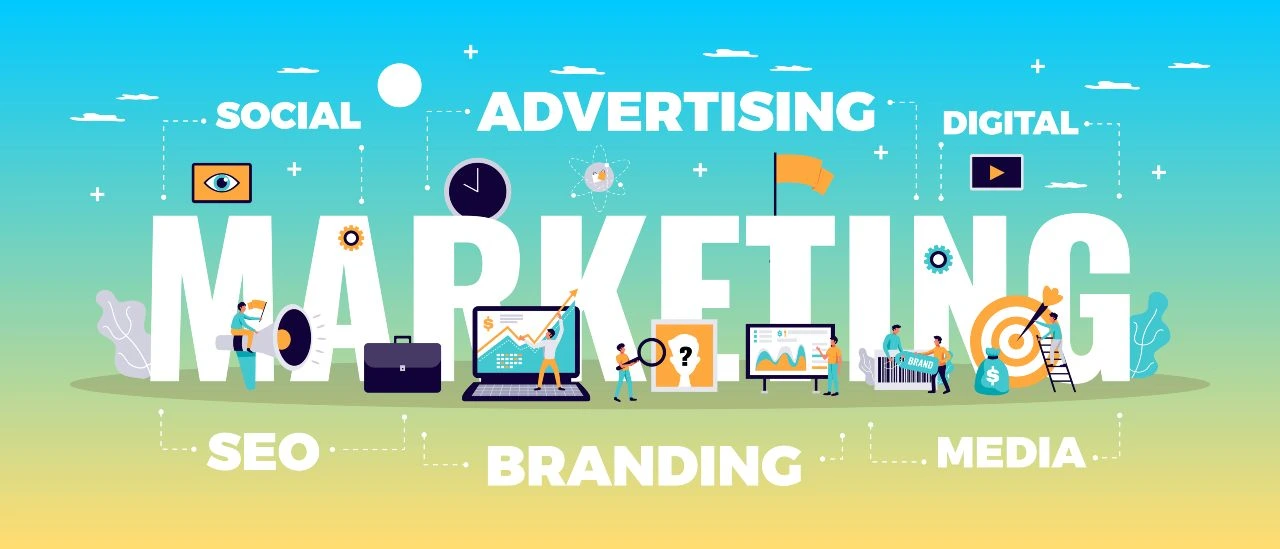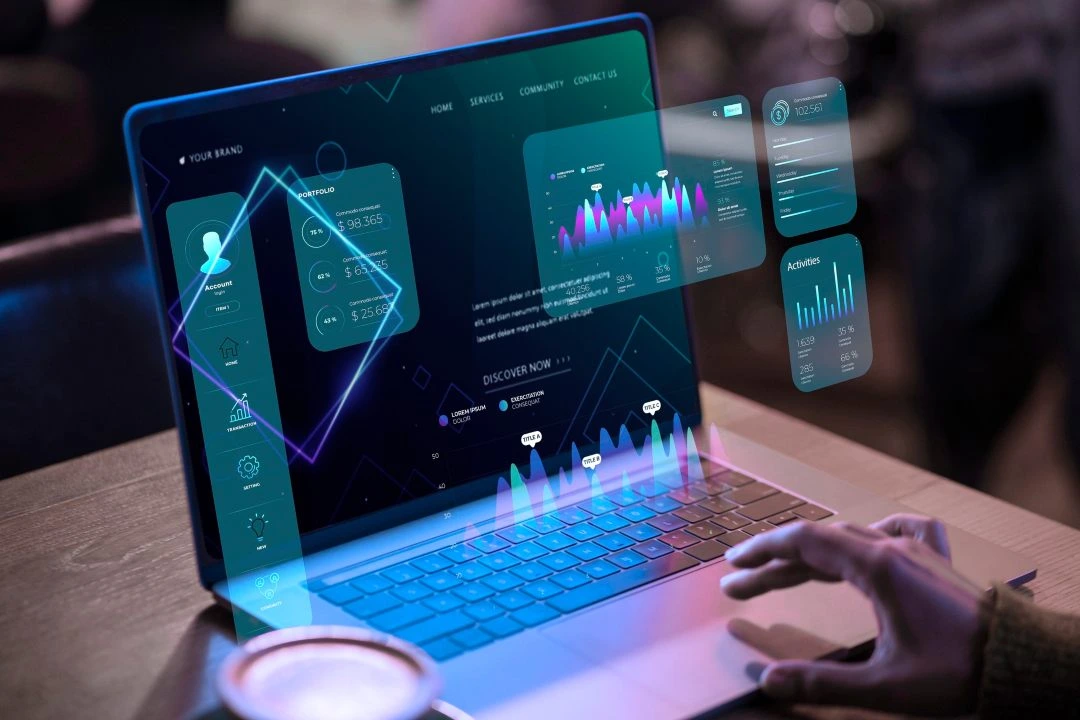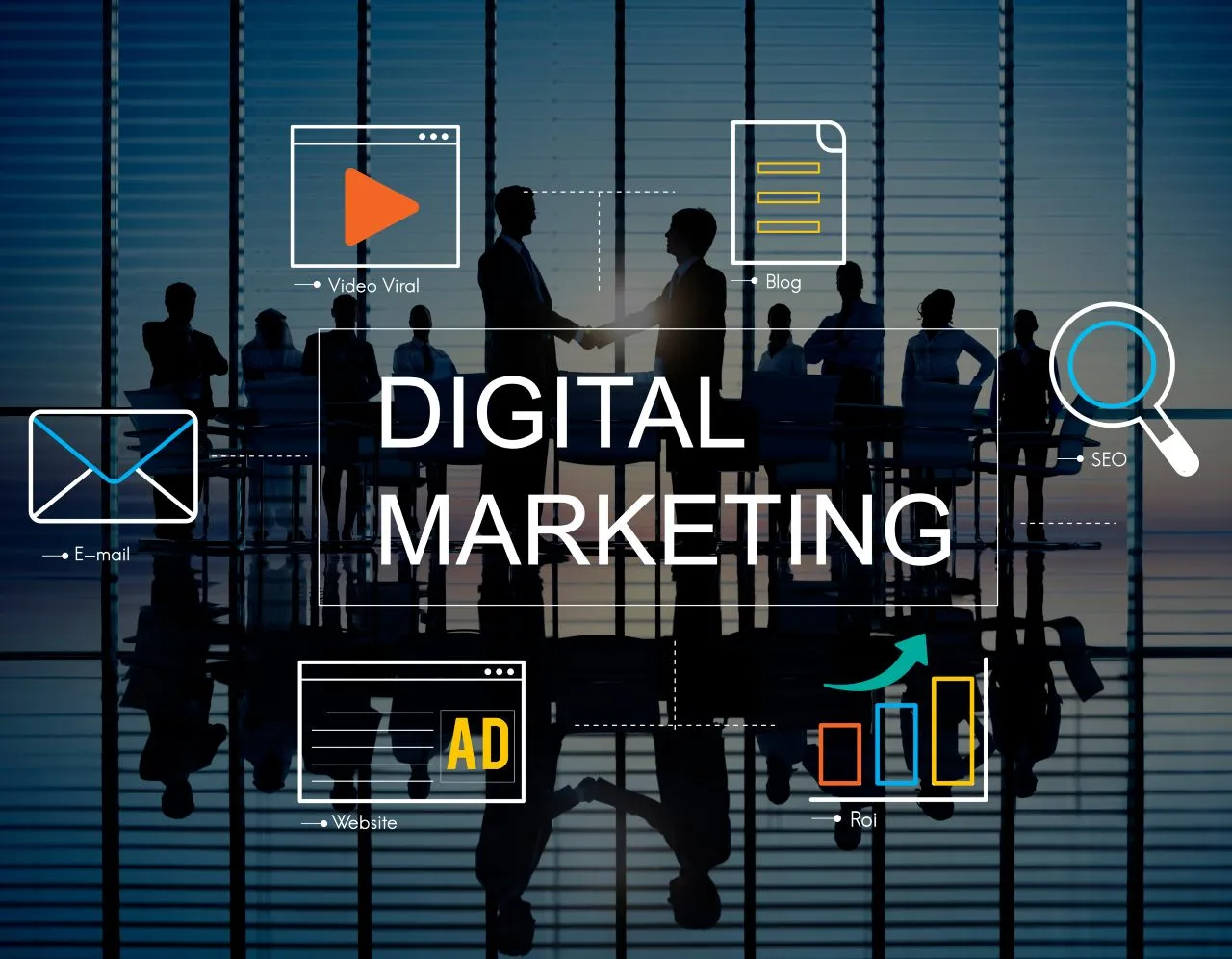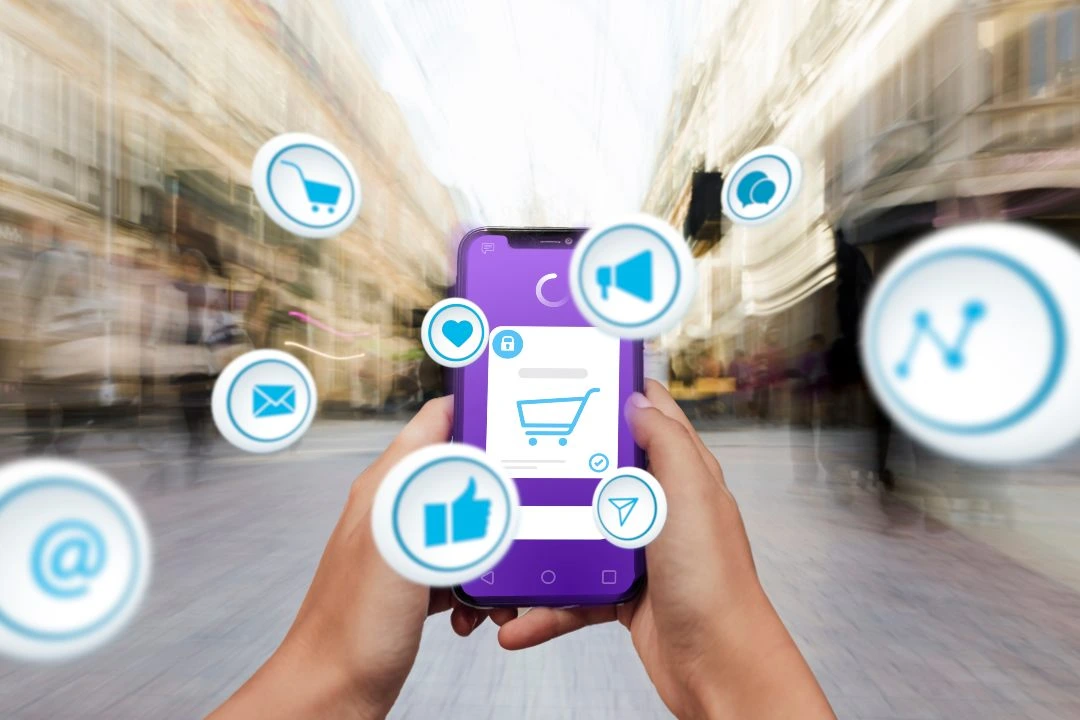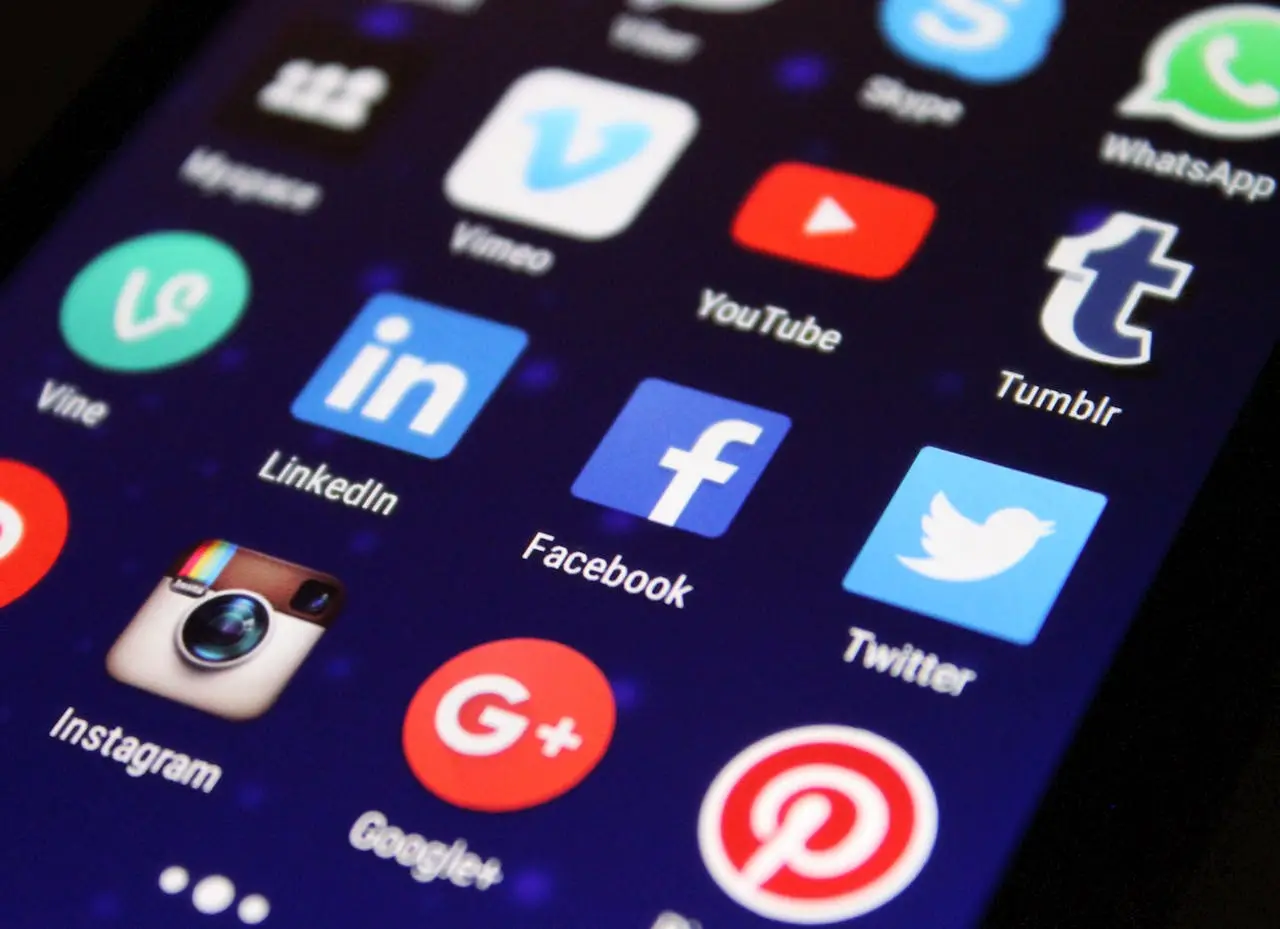Listen to article
Are you ready to dive into the latest shifts in mobile usage? As we journey into 2025, understanding evolving mobile marketing behavior is more critical than ever for digital marketers. After all, consumers are spending increasing amounts of time on their smartphones and tablets carrying out various online activites.
With mobile devices now driving a significant portion of web traffic, it’s essential to tailor your strategies to resonate with today’s on-the-go consumers. From mobile commerce to social media engagement and video consumption, mobile platforms offer unparalleled opportunities to connect with your audience.
In this article, we’ll explore the key mobile usage trends that will shape digital marketing in 2025, providing data-backed insights and actionable tips to help you stay ahead of the curve.
Mobile as the Digital Gateway
Mobile devices have become more than just tools for communication—they’re now the primary gateway to the internet. With users increasingly reliant on their smartphones and tablets for everything from web browsing to e-commerce, adopting a mobile-first approach is no longer optional for marketers. This shift isn’t just a passing trend; it’s a revolution in how people engage with content, making it critical for businesses to stay ahead by delivering optimized, mobile-friendly experiences.
- Globally, mobile devices drive over half of all web traffic. Source
- Approximately 59% of all internet traffic worldwide is generated through mobile devices, showcasing the growing preference for mobile-first engagement. Source
- Mobile devices account for approximately 50.5% of website traffic, while desktop computers make up around 46.5%. Source
- Mobile usage constitutes 50.84% of all online visits worldwide, surpassing desktops at 46.39% and tablets at just 2.76%. Source
- In the United States, web traffic is nearly evenly split between mobile (49%) and desktop (48%). Source
- Smartphones and tablets account for 63% of online traffic, illustrating the dominant role of mobile platforms. Source
- An astounding 97.6% of internet users aged 16 to 24 own a smartphone, illustrating the critical importance of reaching younger demographics via mobile. Source
Takeaway: Mobile Optimization Is No Longer Just a Strategy—It’s a Prerequisite
As mobile devices continue to dominate online activity, brands that fail to optimize their digital presence are essentially leaving valuable opportunities on the table. Whether it’s creating responsive websites, leveraging mobile-friendly formats like vertical video, or ensuring lightning-fast load times, mobile optimization isn’t just about keeping up—it’s about staying relevant in an increasingly mobile-driven world. Notably, younger audiences, who represent the future of consumer behavior, heavily depend on their smartphones, making it crucial for businesses to meet them where they are.
To stand out, think beyond usability. Use mobile analytics to understand user behavior, integrate mobile-first design principles into every aspect of your content, and test your mobile experience relentlessly. Tools like Google’s Mobile-Friendly Test, GTmetrix, or Hotjar can offer valuable insights into problem areas and opportunities for improvement.
Mobile Engagement: User Behavior and Online Trends
Mobile devices are no longer just tools for communication—they’ve evolved into central hubs for work, shopping, entertainment, and information consumption. With people relying on their smartphones for everything from business tasks to leisure activities, it’s clear that mobile isn’t just an accessory; it’s the core of modern digital interaction. As these habits expand, marketers must adapt their strategies to match the growing dominance of mobile usage.
- On average, people spend approximately 3 hours and 50 minutes online each day using their smartphones. Source
- Daily smartphone usage varies across markets, ranging from 1 hour and 54 minutes to 5 hours and 20 minutes. Source
- In 2024, it’s estimated that American adults are spending around 3 hours and 45 minutes each day on their smartphones, which is nearly an hour more than in 2019. Source
- People are increasingly using mobile apps over web browsers, with mobile app usage averaging 3 hours and 28 minutes in 2023, compared to just 51 minutes spent on web browsing. Source
- While Americans spend about 4 hours a day on their desktops, they also spend a significant 3 hours a day on their phones. Source
- Over half of all users turn to their mobile phones when seeking answers online and prefer them for online shopping. Source
The growing reliance on mobile devices reflects a profound shift in how audiences interact with the digital world. For marketers, this opens up exciting opportunities to meet consumers where they already are—on their phones. However, success requires more than simply showing up. With users dedicating much of their mobile time to apps over browsers, the focus should be on creating seamless, app-friendly experiences and optimizing content for smaller screens. Brands that prioritize convenience, speed, and personalization in their mobile strategies are far more likely to capture—and keep—their audience’s attention.
Pro Tip:
Go beyond mobile-friendly design by incorporating in-app marketing, push notifications, and mobile-first commerce strategies. Leverage tools like responsive design, lightweight visuals, and fast-loading content to create frictionless experiences that keep users engaged.
The Potential of Mobile Commerce
Mobile commerce (mCommerce) is no longer an emerging trend—it’s a dominant force reshaping retail. As consumer behavior shifts toward convenience and accessibility, smartphones are now the go-to device not just for browsing but for purchasing. This shift also signifies opportunities for brands to differentiate through frictionless mobile experiences, personalized recommendations, and timely engagement strategies that resonate with always-connected consumers.
- Mobile commerce sales are projected to reach 10.4% of total retail sales by 2025—more than double the pre-pandemic levels. This underscores unparalleled growth potential, fueled by mobile-first strategies that leverage location-based and customized messaging. Source
- By 2022, 79% of global smartphone users had made an online purchase, reinforcing the central role of mobile devices in the digital buyer’s journey. Source
- The path to purchase is increasingly driven by mobile research, making responsive mobile interfaces crucial for engaging users in the decision-making process. Source
- Smartphones dominated U.S. retail site traffic in early 2024, contributing 75% of visits and 66% of online orders, highlighting the necessity of mobile-first design. Source
- Mobile sales now account for 55.25% of all digital commerce, outpacing desktop for the first time and signaling a clear preference for mobile transactions. Source
- Personalized product recommendations via mobile apps or websites influence 30.63% of users to make purchases, showing that tailored experiences are no longer optional—they’re expected. Source
Takeaway: Elevating the Mobile Experience Is Non-Negotiable
The explosive growth of mCommerce is a wake-up call for brands to prioritize mobile-first experiences. As consumers increasingly rely on their smartphones for every step of their shopping journey—from discovery to checkout—it’s critical for businesses to optimize for speed, simplicity, and personalization. Mobile isn’t just a sales channel; it’s where customer loyalty is forged in our hyper-connected age. Investing in user-friendly mobile interfaces, dynamic content, and geo-targeted campaigns will not only boost conversions but also deepen customer trust and retention in a highly competitive space.
Pro Tip:
To maximize your mCommerce success, focus on mobile site speed—a delay of even one second can reduce conversions by up to 20%. Pair fast loading times with AI-driven personalization, such as dynamic product recommendations or location-specific offers, to create an experience that keeps shoppers coming back.
Mobile’s Role in Revolutionizing Social Media Engagement
The intersection of mobile technology and social media has redefined how people consume content, interact with brands, and make purchase decisions. With billions of users accessing social platforms exclusively through their smartphones, mobile has become the heartbeat of digital engagement. For marketers, this mobile-first reality is both an opportunity and a challenge, requiring nimble strategies, mobile-optimized experiences, and a deep understanding of user behavior.
- Mobile devices account for nearly 90% of YouTube visits. Source
- A staggering 99% of social media users access these platforms via their mobile phones, emphasizing the essential role of mobile-friendly content in marketing strategies. Source, Source
- As of July 2024, 5.17 billion social media users exist globally, with mobile devices serving as the primary access point for this staggering audience. Source
- Social media ad spending is projected to hit $219.8 billion in 2024, with mobile ad spend predicted to exceed $255.8 billion by 2028, showing the increasingly mobile-forward focus of digital advertising. Source
- 55% of users have made a purchase after discovering a product on social media, demonstrating the powerful influence of mobile-first social commerce. Source, Source
Takeaway: Mobile Optimization Isn’t Just a Priority—It’s Non-Negotiable
For digital marketers, mobile-driven social media trends are a crystal-clear signal: prioritize mobile or risk losing relevance. Social media platforms like Instagram, YouTube, and TikTok are designed for smartphone screens, aligning perfectly with users’ mobile-centric lifestyles. More importantly, mobile isn’t just for scrolling—it’s shaping consumer journeys, from discovery to purchase. The projected growth of mobile ad spending reflects the platform’s dominance, suggesting that brands must innovate with mobile-first ad formats that are immersive, targeted, and actionable.
Pro Tip:
To truly engage mobile-first audiences, incorporate responsive design, vertical video formats, and platform-specific features like Stories or Reels. Additionally, leverage shoppable posts and in-app checkout options to streamline the path from discovery to purchase, ensuring your brand stays ahead in the social commerce landscape.
Mobile Video’s Influence: Driving Engagement and Advertising Success
The dominance of mobile devices in video consumption has redefined the way audiences engage with content. With platforms like TikTok, Instagram Reels, and YouTube shaping viewer habits, the mobile video landscape offers brands unparalleled opportunities to connect with audiences where they spend the most time—on their smartphones. For marketers, the real challenge lies in creating content that not only grabs attention but also fosters meaningful interactions, driving both engagement and conversions.
- YouTube continues to lead the video consumption race, with 500+ hours of content uploaded every minute, and 70% of its videos being consumed on mobile devices. Source
- Social media videos thrive on mobile, as 92% of videos watched on mobile devices are shared, amplifying their reach and virality. Source
- Facebook generates over 8 billion daily video views, while Instagram’s video consumption has surged, particularly with the rise of reels. Source
- On X (formerly Twitter), mobile reigns supreme, with 93% of video viewers tuning in via smartphones. Source
- Paid mobile video ads on YouTube are 84% more effective than traditional TV ads, making them a smart choice for advertisers. Source, Source
- Smartphones account for 70% of online video consumption, underscoring the importance of mobile optimization. Source
- A staggering 92% of smartphone video viewers are likely to share the content, exponentially amplifying its reach. Source
- Short-form content commands attention, with 59% of videos retaining viewers for 41-80% of their duration, and 30% exceeding an 81% average watch rate. Source
- Shoppable video ads are becoming a game-changer, with platforms like Instagram, TikTok, and Pinterest allowing brands to seamlessly turn engagement into conversions. Source
- Future-forward brands are set to increase investments in platforms like YouTube, TikTok, and Instagram, leveraging the persuasive power of mobile video into 2025 and beyond. Source
Takeaway: Embrace Mobile Video as a Strategic Necessity
The explosive growth of mobile video consumption is not just a trend—it’s an enduring shift in user behavior. The ability to deliver immersive, mobile-first video content that combines entertainment with actionable messaging is a goldmine for marketers. But success requires more than just creating videos; it demands understanding audience preferences, utilizing platform algorithms, and tapping into features like shoppable ads to bring interactivity and ROI into your campaigns. Brands that fail to fully embrace mobile video advertising risk being left behind in a content-driven, mobile-centric world.
Pro Tip:
Tap into the potential of short-form content, as it’s not only highly engaging but also mobile-friendly. Leverage platform-specific features like TikTok’s creative tools, Instagram Reels, and YouTube Shorts to optimize performance. And always design with a mobile-first mindset—think vertical layouts, captivating hooks in the first few seconds, and subtitles for sound-off viewing.
Gen Z’s Mobile Mindset: Social Discovery and Ethical Purchases
Gen Z, the digital-native demographic, is reshaping how brands approach mobile marketing. Known for their reliance on social media for product discovery and their strong commitment to sustainability, they demand more than a great product—they seek authentic brand values and purpose-driven messaging. To succeed with this target audience, brands need to go beyond conventional tactics by aligning their strategies with Gen Z’s deeply rooted preferences for social discovery and ethical consumption.
- 64% of Gen Z individuals prefer discovering products through social media, highlighting the importance of social commerce and influencer marketing. Source
- Recommendations from influencers significantly impact purchase decisions for 55% of Gen Z individuals, underscoring the value of influencer partnerships in mobile marketing strategies. Source
- Sustainability is a key consideration for Gen Z, with 51% rating it as somewhat important when making purchasing decisions, indicating a need for brands to align with eco-friendly practices. Source
- TikTok users are highly engaged, spending an average of 52 minutes per day on the app, demonstrating the platform’s potential for reaching a large and captive audience. Source

Source: HubSpot
By understanding Gen Z’s mobile-first habits, brands have the opportunity to connect with this generation on a deeper level. Social platforms like TikTok and Instagram are not just tools for visibility—they’re Gen Z’s discovery engine, making them essential for targeted marketing initiatives. To stand out, brands should combine engaging content with purpose-driven messaging, blending social discovery with values-driven branding to capture attention and loyalty.
Collaborate with influencers who genuinely share your brand’s sustainability principles. This generation can spot inauthenticity, so to gain their trust, prioritize partnerships that feel organic and reflect the ethical values Gen Z holds dear.
The Power of AI and AR in Transforming Mobile Marketing
The fusion of artificial intelligence (AI), machine learning (ML), and augmented reality (AR) is elevating mobile marketing to unprecedented heights. These cutting-edge technologies are not just driving consumer engagement; they’re enabling brands to deliver hyper-personalized, immersive experiences that resonate on a deeper level. Whether it’s through AI-enabled predictive behavior insights or AR-powered interactive campaigns, marketers have an arsenal of tools to captivate their audience like never before. Let’s look at the data fueling this tech-driven revolution:
- AI-powered personalization is set to dominate mobile marketing, allowing brands to craft highly tailored content based on user preferences and behaviors. Source
- With AI and ML, advertisers can analyze massive datasets to uncover actionable insights, enabling precision-targeted ad campaigns. Source
- The chatbot market is seeing explosive growth, projected to reach $15.5 billion by 2028—nearly triple its value from 2023. Source
- Emerging 5G technology is reshaping mobile marketing, offering faster speeds and lower latency that unlock seamless, high-quality, immersive content experiences. Source
- The AR market is on track to hit $198 billion by 2025, driven by its integration in mobile marketing and growing adoption across industries. Source
- Consumer demand for AR experiences is skyrocketing, with 61% of shoppers preferring retailers who offer interactive AR solutions. Source
- AR marketing seamlessly blends digital elements into the physical world, creating dynamic and engaging user interactions. Source
Leveraging AI and AR for Next-Level Engagement
The statistics leave no doubt—adopting AI and AR technologies is no longer optional for brands aiming to stay competitive. From the predictive precision of AI to the immersive capabilities of AR, these innovations allow businesses to craft deeper, more personalized connections with their audiences. What sets leaders apart in the mobile marketing ecosystem is their ability to seamlessly integrate these tools into their broader strategies, offering not just engagement but memorable experiences that drive loyalty and conversions.
For brands looking to stay ahead, it’s crucial to incorporate these technologies into a cohesive digital approach. Whether you’re focusing on AI-driven insights, AR-based campaigns, or a combination of both, working with full-service marketing experts can help ensure these tools are effectively integrated into your overall mobile marketing strategy.
Start small but think big. Use AI for incremental advancements like A/B testing or user segmentation, and explore AR through interactive in-app features. Tools like Google Lens and AI-driven platforms can make these implementations more accessible. As user expectations grow, your ability to innovate will define your brand’s success.
Advertisement Potential: Relevance and Voice-Driven Strategies
When it comes to standing out in the ultra-competitive mobile advertising space, relevancy isn’t just important—it’s non-negotiable. Consumers are bombarded with countless ads daily, and only those that truly resonate with their needs, preferences, and contexts make a lasting impact. At the same time, the growing adoption of voice search is shaping how users interact with mobile devices, making it a crucial factor in how brands design their campaigns.
- 40.91% of mobile device owners have made a purchase after seeing a relevant ad, illustrating the power of targeted, personalized advertising. Source
- Voice search continues to expand its role in mobile commerce, with 27% of searches on mobile devices now conducted via voice. Source
- In the U.S., 41% of adults engage with voice search daily. Source
Mobile ads that align with user behavior and leverage emerging technologies like voice search are more likely to convert. By understanding how and why users interact with their mobile devices, brands have a unique opportunity to craft campaigns that not only capture attention but also drive action.
Pro Tip:
Combine hyper-targeted ad strategies with voice search optimization to future-proof your campaigns. Incorporating conversational keywords, natural language phrasing, and localized content into your ad strategy can help you capture voice-driven search queries while ensuring relevancy to your audience’s immediate needs. For digital marketers, exploring complementary tactics like B2B website strategy can further enhance results, especially when designing mobile-first experiences tailored to specific audiences.
Conclusion
The numbers don’t lie—mobile is no longer just a channel; it’s the cornerstone of how consumers connect, engage, and shop. From the dominance of mobile web traffic to the rise of mCommerce, video consumption, and AI-driven personalization, the shift in mobile marketing behavior offers unparalleled opportunities for marketers willing to adapt and innovate. Whether it’s crafting mobile-first campaigns, leveraging AI for tailored experiences, or embracing social commerce, the key lies in aligning your strategies with how users interact with their devices.
The growing influence of mobile also underscores one critical point: optimization isn’t optional. A seamless, mobile-friendly experience is no longer a nice-to-have; it’s a fundamental expectation. By staying ahead of these trends and investing in tools and technologies like AR and voice search optimization, brands can not only capture attention but also drive meaningful engagement and conversions.
Ready to captivate your audience on any device? Our web design and development experts specialize in creating mobile‑first, conversion‑focused experiences that keep users engaged and drive results. Let’s build a seamless, future‑ready website that powers your mobile marketing strategy.
About Creating 2025 Data-Backed Mobile Usage Trends for Digital Marketers
This guide was written by the Scopic Studios team and reviewed by Araksya Hakobjanyan, SEO Lead at Scopic Studios.
Scopic Studios delivers exceptional and engaging content rooted in our expertise across marketing and creative services. Our team of talented writers and digital experts excel in transforming intricate concepts into captivating narratives tailored for diverse industries. We’re passionate about crafting content that not only resonates but also drives value across all digital platforms.
Note: This blog’s images are sourced from Freepik.

